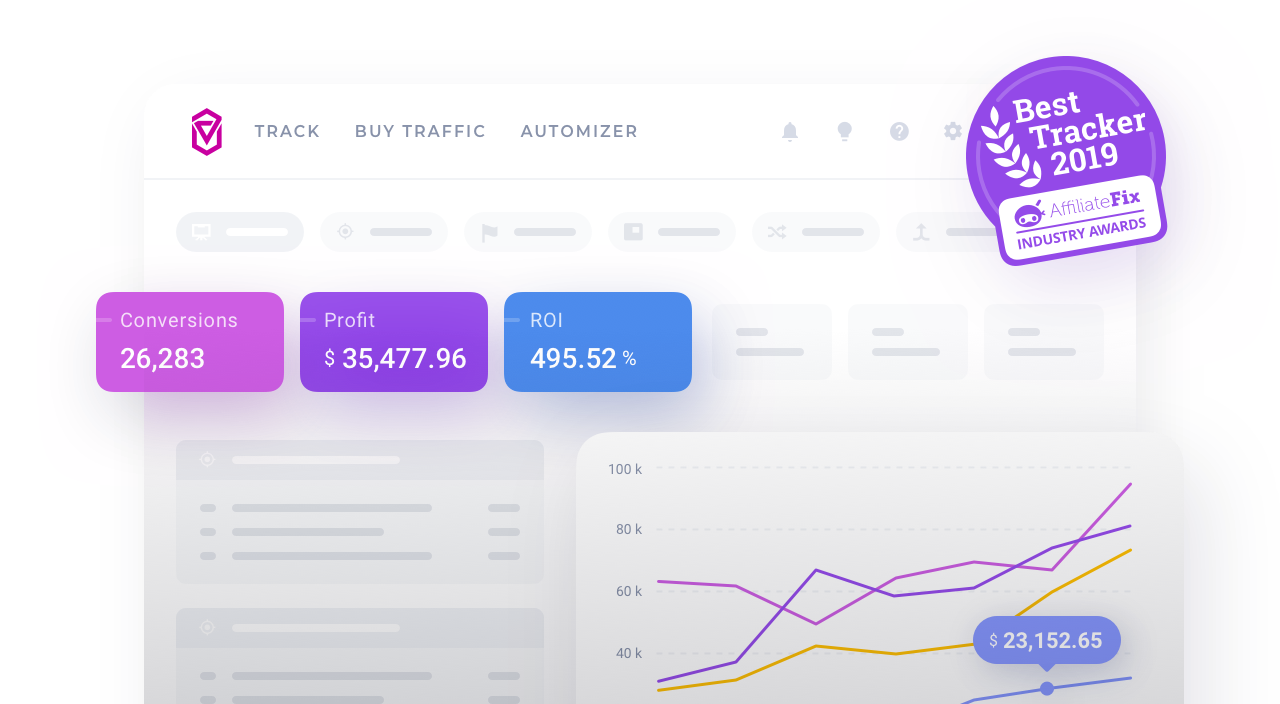Adding a Rule-Based Paths for Custom Variables
In the Adding a Rule-Based Path article you have learned how to create a path that contains one or more conditions regarding traffic characteristics, such as country of origin or day of the week. These characteristics are fetched by Voluum and attributed to a visit. But custom variables tracking provides you with more options. Custom variables can also be the basis of traffic redirection rules created in a rule-based path. The following article will cover the topic of creating a rule-based path with values matched with custom variables.
Matching Traffic Source Parameters with Voluum Custom Variables
Your traffic source platform can pass various information in parameters. When configuring a traffic source element in Voluum, you need to match the traffic source token (placeholder) with one of the custom variables, from {var1} to {var10}. Once you do so, this {var} custom variable will store values passed in the token.
You can get a list of parameters from your traffic source documentation or use one of the Voluum traffic source templates to have all the parameters already matched.
Example:
Consider the following scenario: your traffic source supports passing information about which creative was used to generate a visit under the {creative_name} token. During the setup process, you have matched it with {var1} custom variable. In this traffic source element form, under the Advanced parameters section, you should see the following configuration:

Values passed in this token can serve as a condition in the Rule-based path configuration.
Adding a Rule-Based Path for Custom Variable
Let's assume that the {creative_name} token can pass one of two values: "banner1" and "banner2". You want to direct visitors to two different landers appropriate for the creative they clicked. In this setup, visitors that have clicked banner 1 (which passes the "banner1" value) will be directed to Lander1 and Offer1 and visitors that have clicked banner 2 (which passes the "banner2" value) will be directed to the Lander2 and Offer2. All remaining traffic will go to the Default Lander and the Default Offer. For this to work, we need to create two separate rule-based paths with a correct custom variable each and set up a default path for remaining traffic.
In order to do so, perform the following steps:
- In Voluum, go to the campaign/flow form. In Campaigns, in the Advanced view, go to the Destinations tab.
- Select the Path radio button in the Campaign destination section.
- Create a rule-based path for "banner1". This path diverts traffic that contains the "banner1" value, matched with the custom variable 1, to Lander1 and Offer1.
- In the Rule-based path section, click the Add rule button.
- Provide a name for the rule in the Rule name text field.
- Click the Add condition button.
- Because in our example you have matched the traffic source parameter with the
{var1}custom variable, select the Custom variable 1 option. - With the logical condition selected between Is or Is not, provide the value (not the token or parameter name) of your condition. So if you want to divert traffic to this path that comes with a "banner1" value passed in the
{creative_name}token, select the Is logical condition and provide "banner1" value in the text field.You can provide multiple values, each in the separate line.
Voluum Note: Keep in mind that only exact matches to the value you provided will cause traffic to be diverted to this path. Close matches, such as "cool_banner1" will not go to this path. - Click the Apply button.

- Click the New path button under this rule.
- Provide a name for your path in the Path name text field.
- Select Lander1 from the list of your landers.
- Select Offer1 from the list of your offers.

- Create a rule-based path for "banner2". This path diverts traffic that contains the "banner2" value matched with the custom variable 1 to Lander2 and Offer2.
- Click the Add rule button again.
- Provide a name for the rule in the Rule name text field.
- Click the Add condition button.
- Select the Custom variable 2 option.
- Provide the "banner2" value as your custom variable.
- Click the Apply button.

- Click the New path button under this rule.
- Provide a name for your path in the Path name text field.
- Select Lander2 from the list of your landers.
- Select Offer2 from the list of your offers.

- Define a default path.
- Click the Save button.
Here is what will happen: when traffic goes to Voluum, it will be checked against conditions set in those two rules. If traffic passes the "banner1" value in the token matched with custom variable 1, it will be directed to Lander1 and Offer1. If it passes the "banner2" value, it will go to Lander 2 and Offer 2. Traffic that does not meet any of these criteria (that does not pass any of those two values) will go to the Default Lander and the Default Offer.



